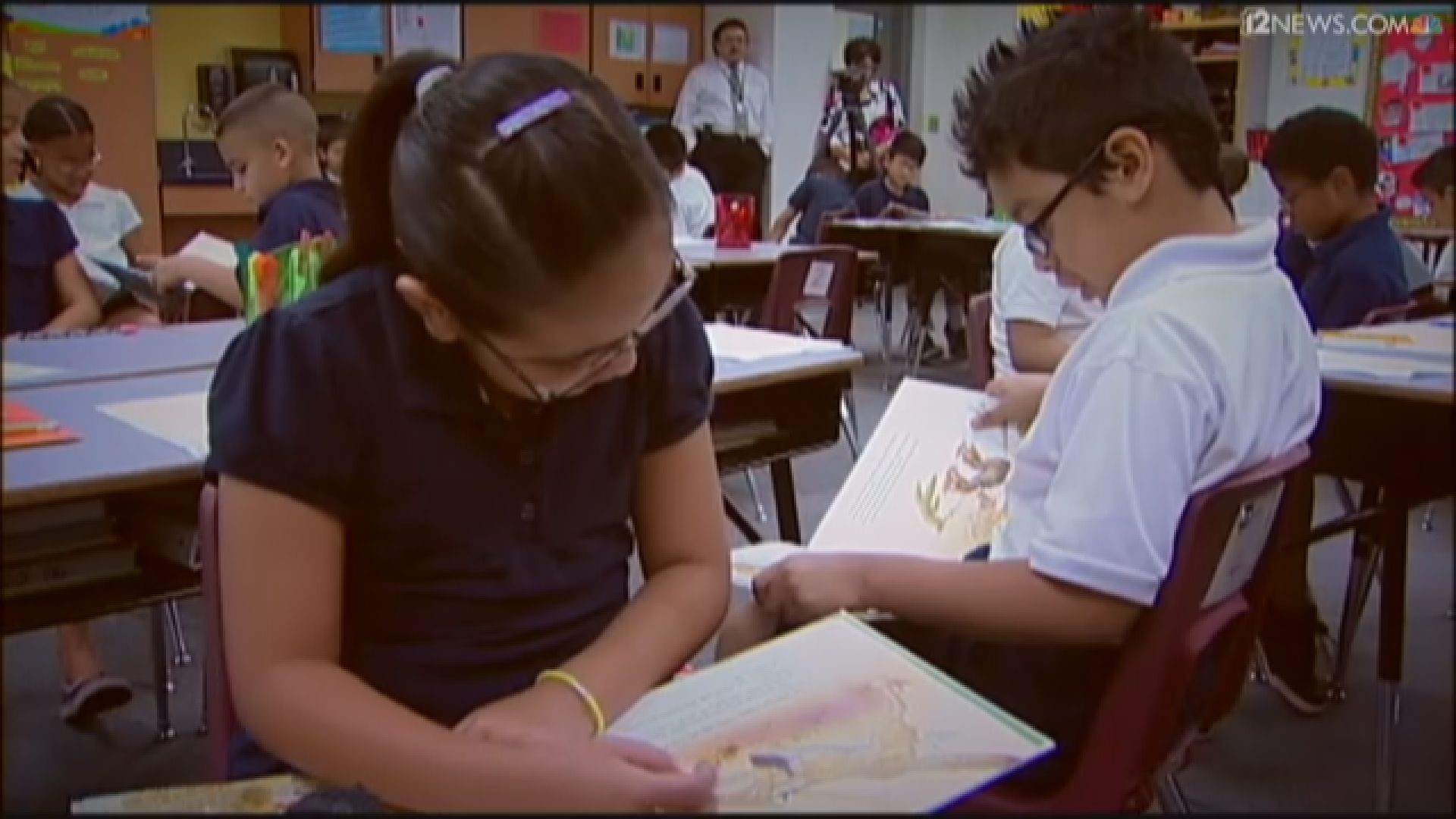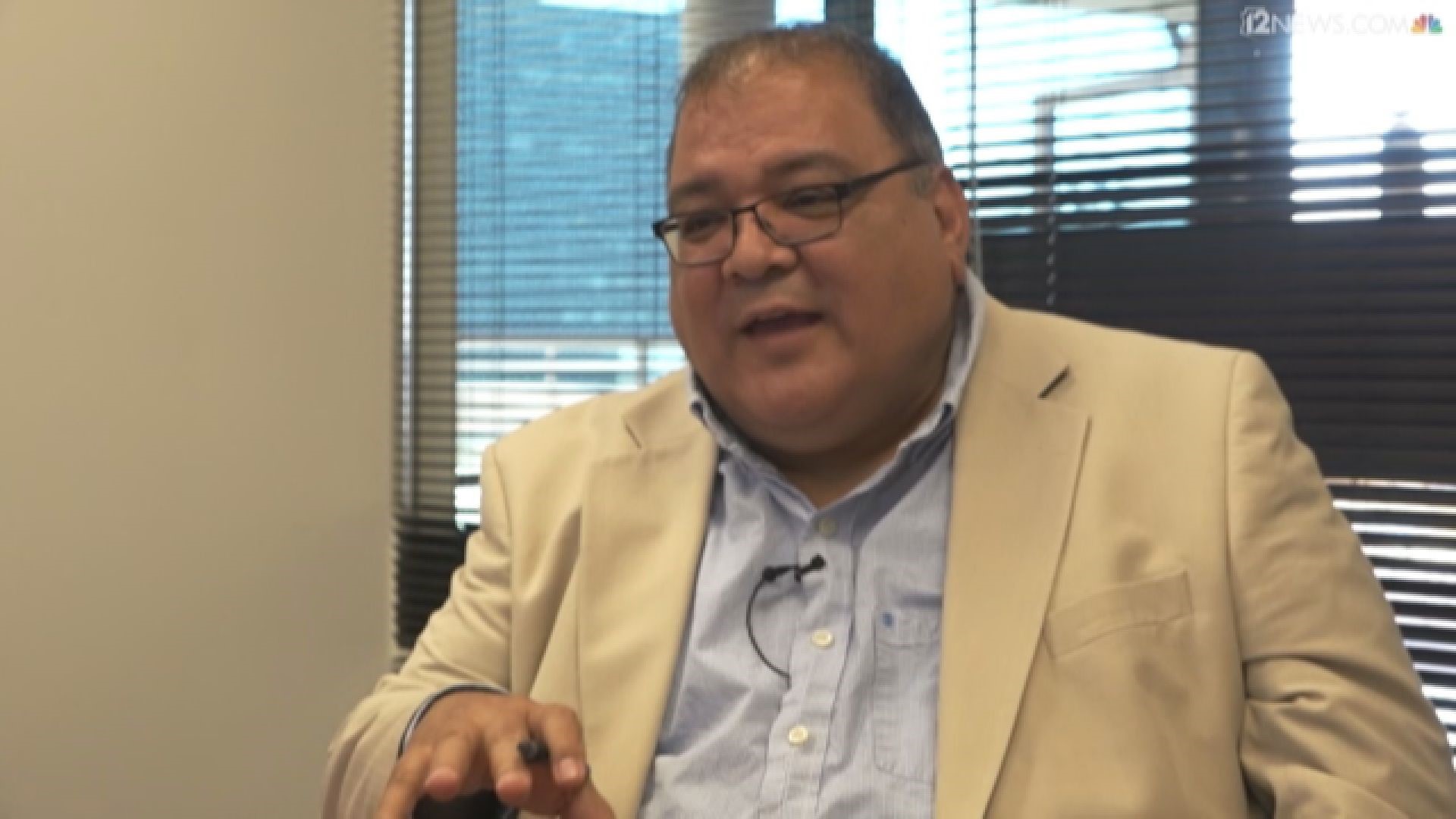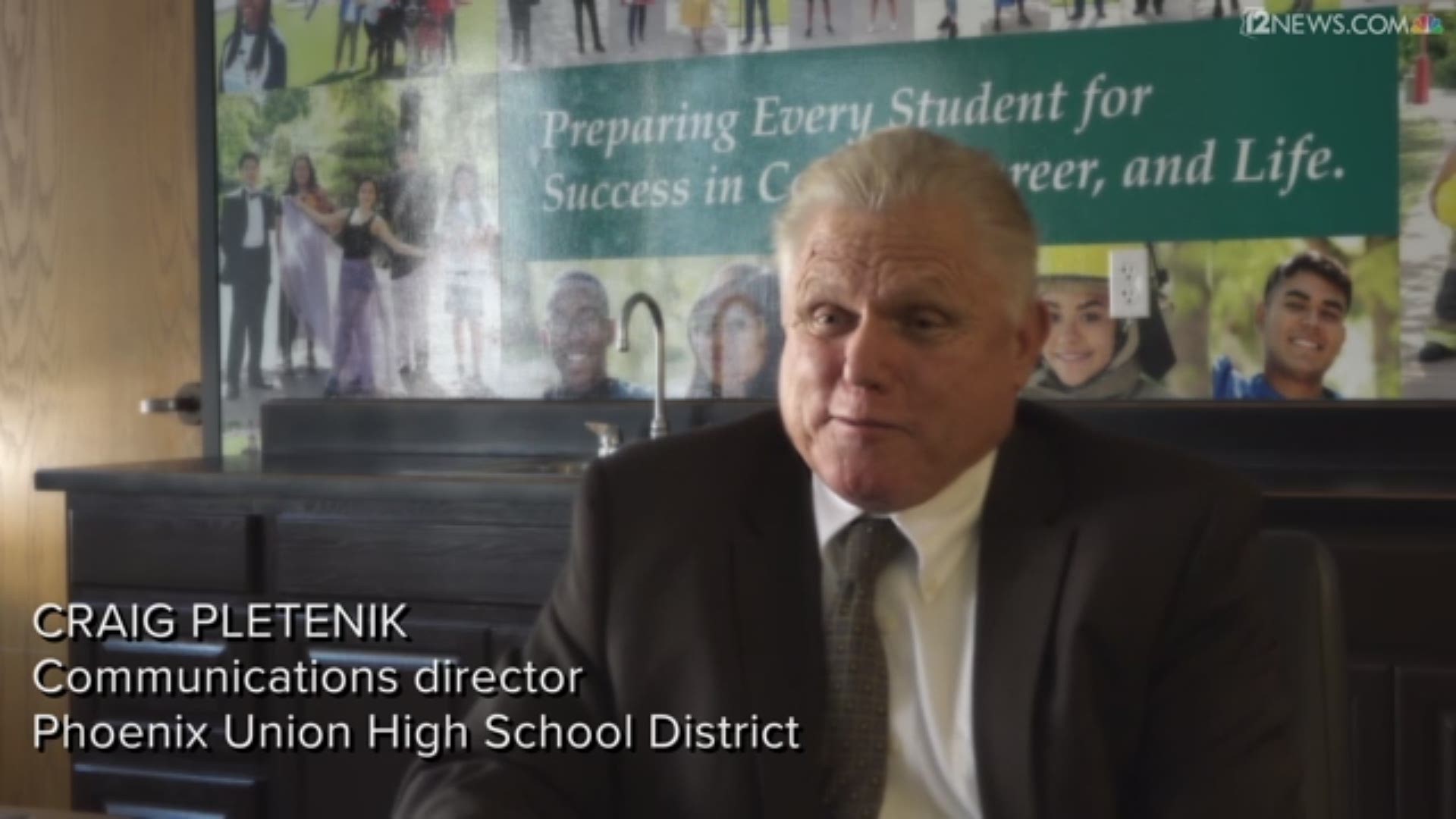Arizona is faced with a unique education predicament: Its public schools have long had significant funding issues, and its minority students— 60 percent of the public school population— are more harshly affected by the state's lack of resources.
The state consistently ranks near the bottom of the K-12 funding charts nationwide. Some of those funds go to private schools as vouchers, and others are claimed by charter schools which, like public schools, are funded on a per-student basis.
Public schools also compete against one another for students based on that per-student funding in Arizona’s open enrollment landscape.
Other funding for public schools comes from their tax base, meaning schools in wealthier areas receive more than those in poorer areas.
Given that Latinos and other minority groups are disproportionately affected by poverty, poorly funded public schools hit them harder, too. Latinos made up 45 percent of all public-school students in the state last year and outpaced white students 47 percent to 38 percent in regular district schools (non-charter).
One way Arizona schools could better support their increasingly Latino students is by hiring more teachers of color.
“There’s some research that says that if a child has at least some exposure to teachers at his school that have a similar ethnic makeup, they tend to do better,” said Dan Hunting, a senior policy analyst at Arizona State’s Morrison Institute for Public Policy. “It’s good to have a role model – that does seem to help kids, particularly those at the lower end of the socioeconomic ladder.”
Just 14 percent of teachers in Arizona are Latino, according to Joseph Garcia, the director of the Latino Public Policy Center at the Morrison Institute.
“There are more Latino kids than non-Latino whites in classrooms in Arizona, but who are they being taught by? Largely non-Latinos,” Garcia said.
That could be a contributing factor to what Garcia and Hunting call Arizona’s Latino achievement gap as the state becomes more Latino.
Students turn to charter schools to graduate
As some Latinos struggle in Arizona’s public district schools, they may look elsewhere for their educational needs: charter schools.
While Latinos made up just 37 percent of charter school students last school year, that is changing.
“The percentage of Latinos going to charter schools have been increasing in recent years, so it appears that they’re more accepting of charter schools now than they were, say, five years ago,” Hunting said.
Some of those Latinos have been moving to charter schools near the end of their K-12 education.
“If you look at the graphs, there’s an uptick in Latino representation in junior and especially senior year of high school,” Hunting said. “So what I suspect is happening there is there are a lot of schools that are catering towards people that have had a difficult time in the traditional school system.”
Hunting calls these schools “credit recovery” charter schools, different from the high-achieving charter schools like BASIS, which garner more headlines. That’s not to say these schools aren’t providing something valuable; a high school graduate makes $180 more per week than a high school dropout.
But that trend of Latino students leaving public district schools may signal that traditional schools are not doing enough for their students.
What to do for Latino students? ‘We educate them’
One public school district that believes it has a model for success in Arizona is Phoenix Union High School District.
Eighty-four percent of the district’s students qualify for free and reduced lunch, an indicator of low household income, which is closely tied to low educational achievement. But they slightly overperform the state’s graduation rate at 81 percent. In 2000-01, the district graduated 55 percent of students.
Nearly all of the district’s students are non-white (95 percent), and more than half speak Spanish at home.
“Once someone asked, ‘Well, what do you do for Latino students?’ I said ‘Well, 81 percent of them are Latino, so we educate them,’” said PUHSD communications director Craig Pletenik. “We don’t really have specialty programs.”
Pletenik said there are a number of factors that help PUHSD buck the trend of low-income students becoming low-achieving students.
He pointed to low-income and desegregation funding as major contributors. Title 1 funding from the federal government goes to districts like PUHSD with children who come from low-income homes. The desegregation funding comes from local taxes and was ordered by a federal judge in the 1980s, aimed at keeping inner-city schools afloat.
While the students’ families may not be flush with cash, the district does cover downtown Phoenix, where Pletenik said corporations raise the tax base.
That funding helps PUHSD when it comes to hiring teachers. Pletenik says his district is able to pay teachers better than surrounding districts because of those extra funds.
“We want to be 10 percent above whatever the market rate is because our kids deserve it and we want to be leaders in that area,” Pletenik said. Just 23 percent of the district’s teachers are Hispanic, but that is higher than the state’s mark.
Other schools around the state may not have that opportunity, though, because they don’t have the same tax base, and the desegregation ruling only gave money to a few districts. Meanwhile, the Latino achievement gap will have drastic effects on Arizona’s economy as a whole.
“The result is the median income for Arizona will drop by 2030 by $7,000,” Garcia said.
More than half of Arizona's students are minorities, and nearly half of them are Latino, and those numbers are only projected to increase. Embracing that reality by hiring more diverse teachers may be part of a solution to Arizona’s economic puzzle.
“The leaders of tomorrow and the businesspeople of tomorrow and hopefully the teachers and the principals of tomorrow are going to be much more diverse than they are today here in Arizona,” Pletenik said. “And that’s a big responsibility in our district to make sure that happens.”
Garcia said that responsibility of ensuring success for Arizona’s increasingly Latino population rests not just on educators, but on the state as a whole.
“Arizona’s going to be very Latino, and that’s not a bad thing at all. Arizona’s always been Latino,” Garcia said, “So it’s a matter of understanding that, embracing that and building a future that we collectively benefit from.”




